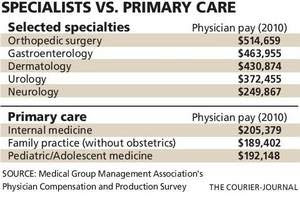Princess Health and Video streaming for consultation with doctors expands and becomes more popular; 2 Ky. insurers use it and another plans to.Princessiccia
doctor shortages doctors emergency rooms primary care telemedicine
In the past, people had to go to the emergency room to receive medical attention if they required it outside the usual hours for doctors. Now telemedicine programs such as KentuckyOne Health's "Anywhere Care" and Anthem BlueCross BlueShield's "LiveHealth Online," Kentuckians can access a doctor 24/7 through a computer or mobile device.
"Patients like telemedicine because it's fast and easy to use and cheaper because it's a low-overhead service," Esther Zunker writes for The Lane Report, a Lexington-based business magazine.
UnitedHealthCare, a Minnesota-based health benefits provider for many people in Kentucky, plans to cover Skype-based doctor visits through "NowClinic," "Doctor on Demand" and "American Well." Anywhere Care and Live Health Online give clients a list of certified doctors they can chat with through video on a computer or a mobile device. The doctors can provide diagnosis and treatment and even write a prescription. They can direct patients to an emergency department if necessary.
It's affordable, too. A LiveHealth Online appointment costs the same as an office visit for eligible members. LiveHealth doctors usually charge $49 per online "visit." Anywhere Care costs $35 per visit, even if patients don't have insurance.
"As we know, care can be limited and is based on being able to get someplace when [a doctor] has an opening," said John Jesser, Anthem's vice president of provider engagement strategy. "They only have certain hours, and that doesn't always work for when people don't feel well. [Telemedicine] expands access to care for the consumers, making it much more friendly to their schedule and lifestyles."
Telemedicine is also convenient for doctors. It saves money for hospitals and allows one doctor in one location to help patients in a variety of locations. Patients can receive help with chronic conditions over periods of time without having to travel to the doctor's office.
"We've had amazingly positive feedback from patients who have tried this service," said Kathy Love, director of strategy and business development for KentuckyOne Health's Central East Kentucky Market. "People have told me they've used it multiple times when they've needed it . . . either late at night or over the weekend."
She also said people who use telemedicine still need a primary-care physician: "It's something you can access 24 hours a day with a very minimal wait and very professional providers, but it shouldn't replace your very important relationship with your primary-care doctor." (Read more)
 |
| Photo from The Lane Report |
UnitedHealthCare, a Minnesota-based health benefits provider for many people in Kentucky, plans to cover Skype-based doctor visits through "NowClinic," "Doctor on Demand" and "American Well." Anywhere Care and Live Health Online give clients a list of certified doctors they can chat with through video on a computer or a mobile device. The doctors can provide diagnosis and treatment and even write a prescription. They can direct patients to an emergency department if necessary.
It's affordable, too. A LiveHealth Online appointment costs the same as an office visit for eligible members. LiveHealth doctors usually charge $49 per online "visit." Anywhere Care costs $35 per visit, even if patients don't have insurance.
"As we know, care can be limited and is based on being able to get someplace when [a doctor] has an opening," said John Jesser, Anthem's vice president of provider engagement strategy. "They only have certain hours, and that doesn't always work for when people don't feel well. [Telemedicine] expands access to care for the consumers, making it much more friendly to their schedule and lifestyles."
Telemedicine is also convenient for doctors. It saves money for hospitals and allows one doctor in one location to help patients in a variety of locations. Patients can receive help with chronic conditions over periods of time without having to travel to the doctor's office.
"We've had amazingly positive feedback from patients who have tried this service," said Kathy Love, director of strategy and business development for KentuckyOne Health's Central East Kentucky Market. "People have told me they've used it multiple times when they've needed it . . . either late at night or over the weekend."
She also said people who use telemedicine still need a primary-care physician: "It's something you can access 24 hours a day with a very minimal wait and very professional providers, but it shouldn't replace your very important relationship with your primary-care doctor." (Read more)








